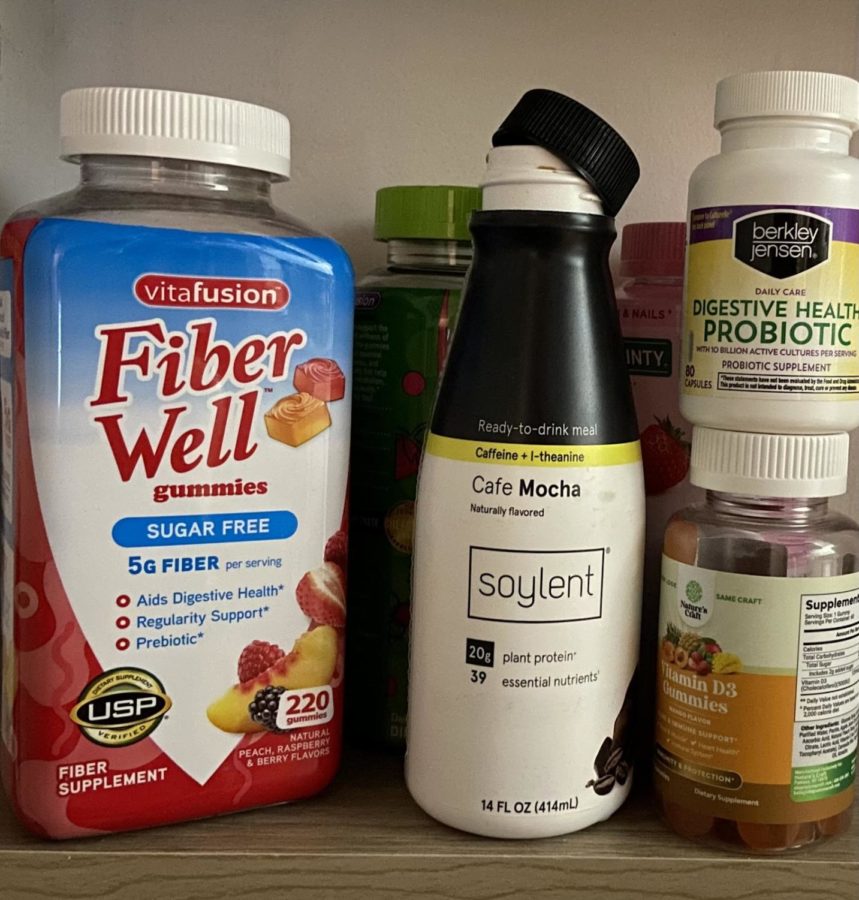The Pros and Cons of Soylent: Liquid Food
With the speed at which modern society moves, people have less and less time to complete mundane tasks including eating and drinking.
Makers of drinks like Soylent claim that they contain most vitamins and minerals, if not everything, that a regular meal should have.
Technology is constantly advancing, and the food we consume is no exception. As we age, we find ourselves having less and less time to do the things we love. With the increasing responsibilities, mundane tasks like cooking and eating feel more and more like chores. Consequently, we see companies like Soylent Nutrition, Inc. that aim to make the basic principles of life such as eating, communicating, and traveling easier. Soylent, though, is unique. Its goal is to create drinks that replace meals.
They claim on their website to ‘simplify’ food, writing “The sky’s the limit for innovating and creating more efficient and plentiful food sources. We believe that these innovations will change the way the world looks at food and the role food plays in our lives.”
As promised, Soylent drinks contain a multitude of nutrients that reportedly fulfill our dietary needs. Their popularity has been on the rise ever since they were released to the public in 2013, and they continue to flourish among teenagers and young adults today.

Liquid diets are not as new as we would assume. They date back centuries and are much less odd than you may think; soup, or broth, is a good example of a common liquid meal, and soup has been used both as a temporary medical remedy and an everyday food staple. Now, however, people are consuming liquid foods to either diet or to save money and time. Though these liquid diets ideally contain all the nutrients required of the human body, they are by no means as replenishing or filling as traditional meals. As a result, dieters may utilize this limitation in order to promote weight loss.
Over 6,500 reviews from Amazon users who have purchased Soylent claim that it has changed their lives. Their reasons varied – some said it helped them consistently consume three meals a day, while some cited decreased meal times, and some experienced entirely unique benefits. Less than 15% of users complained about the downsides of going on a Soylent diet, though it is notable that the top negative review gained significantly more likes than the top positive review. Many of the negative comments complained about the side effects from consumption of certain chemicals or components that lead to bad headaches or other circumstances. So, is Soylent worth it?
Well, yes and no. Since mid-September 2022, I have been opting for Soylent (mocha) as a replacement for breakfast and lunch. Before I began this diet, I regularly skipped lunch and sometimes even breakfast, eating a piece of candy now and then to temporarily satisfy my hunger. Throughout the day, I would constantly feel tired and unmotivated. When I began incorporating Soylent into my meals, there were notable changes, though not many. I gained an energy boost, but Soylent meals didn’t solve the other problems that I had when I didn’t eat breakfast and lunch – most notably, hunger.
Soylent isn’t a miracle food. It won’t fix your body or offer it all the nutrients it needs – no drink that can do that. However, that’s not to say that it is completely useless. There was a major difference in the first day, as it was the first lunch that I would have had in the past two weeks. From the start of the diet, I felt energized and motivated, perhaps due to the sudden introduction of a nutritious “meal.” As the weeks progressed, though, I returned to my previous state of near-constant hunger. I experienced lack of motivation and constant anticipation of stomach growls.
As reporters Tori Waite and Olivia Thoelke write, “Roaring stomachs cause children to be cranky, hyperactive, and aggressive. These behavioral issues can distract kids from their school work, leading to developmental delays and learning disabilities.”
Many people who suffer from hunger find this relatable. How many times have you found yourself struggling to focus on a task or make valuable interactions with others because of hunger? In our day-to-day lives, many of us find ourselves to be less productive when all that we can think about is grabbing a bite of food or a snack. This is possibly one of the greatest downsides to going on liquid diets.

What this says, I believe, is that ‘nutrient’ drinks can only replace foods to a certain extent. Though it is possible to receive vital nutrients from liquid meals, it’s more of a supplement (an addition) than a replacement to regular meals. Additionally, when dieters choose to switch to a liquid plan, they put themselves at risk of overdose. Most vitamin gummies, drinks, or powders have 100% or over 100% of the average person’s recommended daily intake. This may be harmful, as having too much of insoluble vitamins could potentially lead to a detrimental effect on tissues and bones.
Because fat-soluble vitamins accumulate in your body’s tissues when they are overdosed, they can cause much more harm compared to non-soluble vitamins. Water soluble vitamins, like vitamin B, are simply filtered out of our body when we’ve had enough of them. Fat soluble vitamins like vitamins A and D, however, are absorbed by the body and stored in our fatty tissue and liver. As a result of this, overconsumption of such vitamins could lead to deterioration of the body.
Instinctively, we recognize that liquid diets may not be the best choice, and there are a multitude of reasons for why this is true. A reporter in the publication MedlinePlus writes, “Eating only a full liquid diet can give you enough energy, protein, and fat. But it does not give you enough fiber. Also, you may not get all the vitamins and minerals you need”. Indeed, there is only so much that a bottle of liquid can do compared to “actual” food. But wouldn’t that change if we simply took vitamins that made up for the ones missing in the drink?
There’s a problem with this argument as well. Mayo Clinic Staff argue that “Taking vitamin B-12 with vitamin C might reduce the available amount of vitamin B-12 in your body. To avoid this interaction, take vitamin C two or more hours after taking a vitamin B-12 supplement.”
Soylent contains 20% of both Vitamin C and Vitamin B12. This could cancel out the effects and lead to Vitamin B12 deficiency. With all these drawbacks, it’s clear that Soylent isn’t a true replacement for meals.
Through a survey of 32 random high school students, I found that over 60% of them skip meals, and 75% of those meals are skipped as a result of lack of time.
Even so, the survey results show that most students are unwilling to opt for a liquid diet, with over 50% of students voting that they were “not likely” to swap out their edible food anytime soon. “I mostly skip meals when I get lazy or don’t have time. I’ll eat if I have the time to and I don’t have a desire to make my diet a liquid diet,” said Victor Li ’23.

Many students emphasized the joy of eating food for its texture and the mood surrounding the table when eating out with friends or family. It is an escape for them in many ways; eating time allows for people to catch up on life. They argue that communication is an essential part of mealtimes and partaking in it does not count as “wasting” time. Food brings connection to people from all cultures and backgrounds alike. However, what happens when someone can’t afford it?
Prices of liquid or powder foods produced by companies such as Soylent, Huel, and/or GNC are on average around $3 a bottle, around 400mL. This is a lot more manageable than the cost of actual food, which could easily cost over $5. At those prices, people are more inclined to purchase unhealthy foods, as healthy food costs around $1.50 more on average.
So even with all the drawbacks of replacing meals with supplements, using drinks to replace meals isn’t entirely implausible at all. Many families of lower income could turn to meal supplements as a form of financial relief, all while benefiting from the nutritional value offered by the consumption of such supplements.
The food industry is continuously growing to meet consumers’ wants and needs. One day, food supplement formulas may be perfected. When that day comes, who’s to say that a couple million people won’t change their minds about opting for a different food supply? For now, though, the popularity of liquid diets and powder supplements continue to stay on the rise. Its benefit has been proven helpful to those who seek affordability or to diet. Its potential is endless, and they will only continue to grow as the demand for them increases.
Though these liquid diets ideally contain all the nutrients required of the human body, they are by no means as replenishing or filling as traditional meals.
Jasmine Chen is an Editorial Editor for ‘The Science Survey.' She finds joy in bringing stories to life through the focus of one small detail at a time,...

